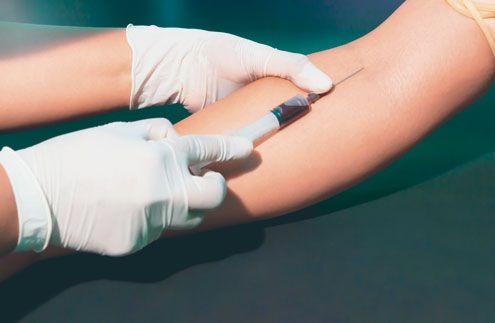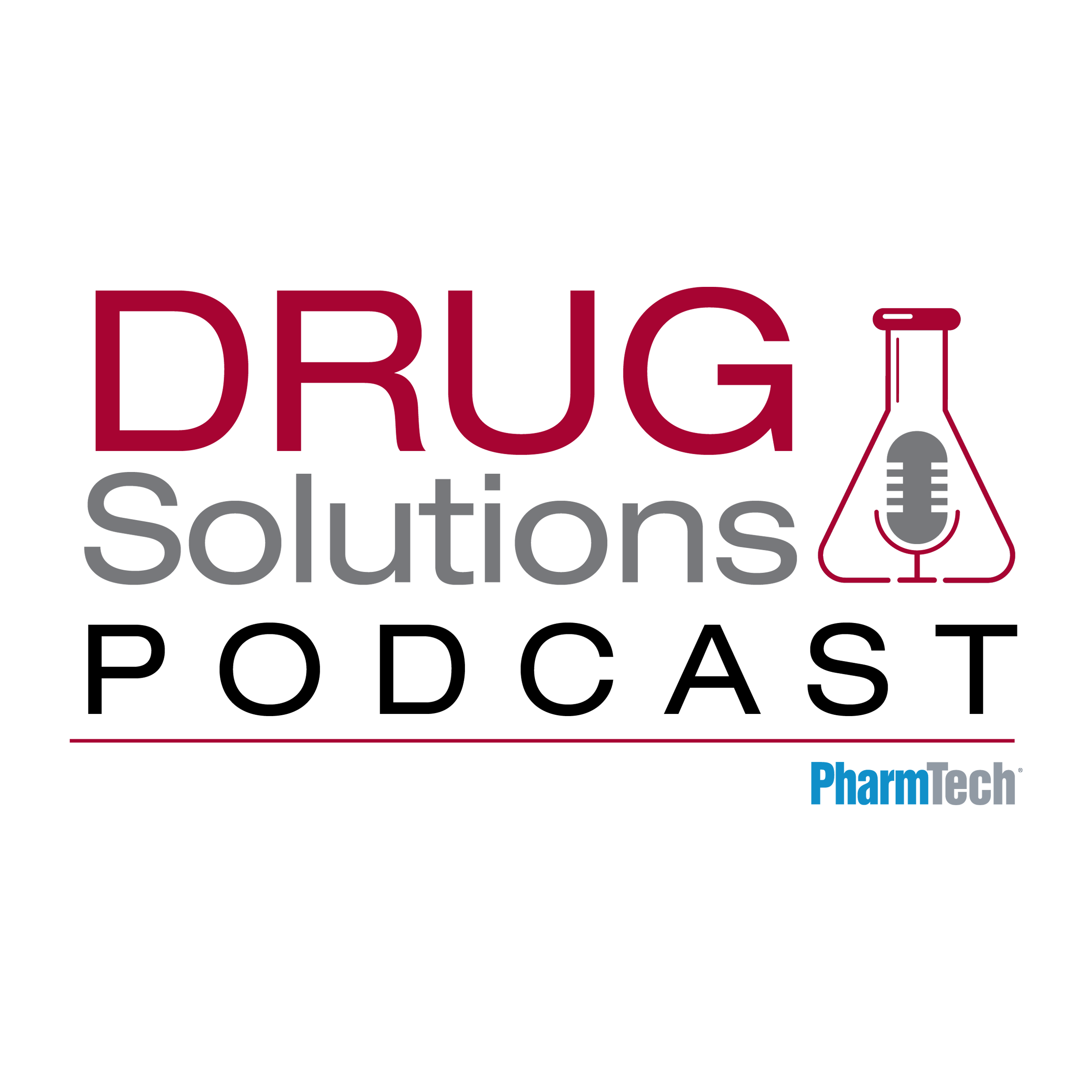Publication
Article
Pharmaceutical Technology
What to Watch Out for in Clinical Trials Manufacturing
Author(s):
Requirements for early- and late-stage trial manufacturing may differ, but complying with good practices, maintaining blind studies, and considering logistics remain crucial at all times.
Sergey Nivens /shutterstock.com

Early-stage manufacturing poses unique challenges, especially when working with outsourcing partners. Early communication, good project management, and risk management are crucial to success. In this roundtable, experts from contract research and contract development and manufacturing organizations (CROs and CDMOs) share insights on key requirements.
Responding are Ann Flodin, vice-president and general manager at Recipharm, which recently started up a US-based clinical manufacturing facility in Research Triangle Park, NC; Tony Street, PAREXEL’s head of global portfolio leadership for clinical trial supplies and logistics; PAREXEL’s senior director of North American depot and production services, Matthew Caponi; Marion Schrader, senior director of communications at Rentschler Biotechnologie; and Tim Roberts, director of business development for North American Clinical Services at PCI.
Buffering: Allow extra time
PharmTech: What are the biggest potential problems, and the most important points for sponsors to keep in mind, when planning to work with contract partners on early and later-stage clinical trial manufacturing?
Flodin (Recipharm): Formulation development often comes quite late in the total product development chain, after the drug candidate has been selected and enough of the API has been manufactured. Even though it is possible and appropriate to work with a simple formulation in the early clinical stage, we often see that work on early stage formulation development begins too late.
One simple piece of advice for anyone planning a first-in-human study is to start planning for development and manufacture of the drug product at least one year before the start of the trial. This approach builds in enough time to overcome potential solubility or delivery issues, gain enough knowledge about the product, and ensure stability to cover the duration of the early studies. It is also essential to work with a regulatory expert to define a clear strategy and understand what goals must be met with the formulation development and manufacture, in order to support project timelines and study goals.
In later stage trials, it becomes important to develop a formulation that will ultimately be appropriate for a tech transfer and manufacturing at commercial scale. Here, it is critical to allow enough time and budget to allow quality-by-design (QbD) work to be done, and to evaluate the influence and importance of different variables in optimizing formulation.
At this point, the product specifications and quality target product profile must be refined, and the critical quality attributes defined and explored. Any shortcuts taken during this stage will only lead to longer timelines when the time comes to transfer the manufacturing process. During that critical point, unexpected problems can show up, resulting in a delayed launch and lost revenue.
It is also important to consider the final container closure system and any necessary comparisons or studies needed, depending on material or design changes along the development path.
Schrader (Rentschler): Fundamental to all aspects of the decision-making process is to ensure that the partners selected have a depth of experience and a strong track record. For biopharmaceuticals, this means expertise with both upstream and downstream processes.
Clear assignment of responsibilities and frequent communication between sponsor and partners are essential to managing the complexities of clinical manufacturing. (ALPA PROD/shutterstock.com)

Roberts (PCI): As a partner for clinical trial supply, be it manufacturing of the drug product, packaging and labeling, or execution of the global logistics to the investigator sites, we provide the most value for the client when we are engaged early in the process. We consistently see requests to meet very aggressive deadlines, some of which are derived from unforeseen situations, but may also be the result of a suboptimal supply strategy. We encourage our clients to focus on development of a solid plan for execution, along with preparation of contingency plans for addressing those unforeseen surprises that can arise.
In a true partner role, we are engaged much earlier in the development process. With that engagement we can leverage our experience and global insights to make suggestions that take much of the stress out of the supply, as well as maximize efficiency and cost.
Applying RACI project management tools
PharmTech: How should sponsors and contract partners manage projects associated with GMP manufacturing of clinical materials? How should responsibilities be divided?
Flodin (Recipharm): Communication is key. It is essential to start planning the manufacturing well ahead of when the clinical study is to take place, and to continuously update all parties involved of any changes to plans. And there will always be changes, whether they are due to sourcing problems, delays in establishing protocols and getting approvals in place, or challenges with formulation development.
I find it very helpful to structure the planning with a Responsible Accountable Consulted and Informed (RACI) matrix, in addition to the formal quality agreement. RACI is a project management tool that is used to clarify responsibilities and expectations. It helps ensure that no activity is overlooked, and, in a simple way, clarifies which stake holder, and what role, is responsible for what activity.
Using this approach also helps clarify the relation and dependence between different stakeholders and activities. If different organizations are involved, a RACI matrix also helps partners inform each other about different stages in the project, which is valuable for understanding parallel activities that are going on can help decision making and optimization of other activities.
The RACI approach can also help understanding, accommodating, and rescheduling due to delays or changes in the program. It may be useful to take the extra effort to ensure that an inter-disciplinary risk assessment is performed and documented, and that a risk mitigation plan is in place.
Schrader (Rentschler): Establishing a steering committee with representatives from both partners is crucial to provide guidance and address key issues. For us, working in partnership means working closely together with clients, making joint decisions, and maintaining ongoing interaction.
Roberts (PCI): It is imperative at the outset of any project that a full responsibility matrix be developed, assigning clear objectives and accountabilities. This approach is particularly important for the release of clinical material to the international markets.
As regulations become increasingly complex, greater scrutiny is placed on this element of the supply chain. Although API is usually supplied by the client company, regulatory requirements exist for the outsourcing partner to better understand and approve the entire supply chain assuring total security of supply. The best way to approach this is by working closely together to establish a robust Technical Quality Agreement at the onset of any early-stage manufacturing program.
Randomization and blind studies
PharmTech: Ensuring accuracy of blinded studies is essential for any clinical trial’s success. How do you approach packaging issues? What must sponsors be aware of, and how does one ensure effective collaboration?
Street (PAREXEL): In today’s marketplace, where we are seeing an increase in biosimilar and injectable products, blinding an investigational medicinal product (IMP) against a marketed comparator is becoming increasingly challenging.
Kit numbering and allocation are anything but trivial. The use of a hidden number that is not visible on the kit will alert warehouse staff to the order in which kits should be packed, improving efficiency. (Nattawut Jaroenchai/shutterstock.com)

Where oral solid-dose products can be routinely over-encapsulated to maintain the blinded appearance of the dose form, sterile injectables present a very different challenge. In almost all cases, it is nearly impossible to find an exact match for the vial and stopper design used on the commercially sourced comparator and the IMP for the study. This challenge can be addressed using a cover for the vials, but if a product requires re-constitution, this can lead to challenges for healthcare professionals at the study site to be able to check that the product has fully dissolved into the diluent and that no particles are present.
More often than not, it is good idea to employ the services of un-blinded site pharmacy staff who can prepare a patient-specific dose and provide it to the investigator for administration in a syringe or IV bag. Using an un-blinded resource at the study sites does add some cost to the site fees, but this is often offset by the reduced complexity in the packaging and labeling process, so that product can be provided to the study sites in non-patient specific ‘bulk’ kits. This is the ultimate in late-stage packaging customization and, therefore, helps to reduce, by a significant amount, the overage needed to run a study.
Far too often, the GMP and clinical supply teams that are making decisions on kit and supply-chain design have never even visited a study site. They should have access to sites and site staff to help them better understand the processes and environment at study sites, and, ultimately, the bigger picture and the options available to deliver a successful clinical supply chain.
Caponi (PAREXEL): The single, most important factor to ensure adequate blinding is planning. You should meet with your CRO as early as possible to discuss blinding strategy and detail dosage form.
It is also vital to establish the understanding that even the smallest change to any agreed-upon detail can have a major impact. Once an agreed approach is decided, no change to any part of the pack can occur at any time.
This means that, even if you are doing a resupply three years into a long-term study, you must maintain everything as originally established. If any changes are required, plan. Anticipating a change and ensuring your strategy will address it is vital to avoid any unblinding.
Generally, we first ensure that any packaging components must be identical. If you are making kit boxes for a four-arm study, then you would typically package all four arms using the identical lot of boxes. Not only is the efficient and practical, it also avoids even having a minor (but perceptible) difference from lot to lot create an issue.
After that, there is a spectrum of concerns that need to be considered around but not limited to: dosage form smell, taste, appearance, weight, and feel, as well as pack components, labels, and packaging method. Every case has its own unique concern. Sponsors need to understand that all steps of any blinding process require close consideration as early on in the supply chain as possible.
For example, years ago I was involved in a study that presented the product in a metered-dose inhaler (MDI) canister. The innovator’s product was manufactured well, according to GMP, but no consideration was made for its ultimate use. When it was used in a comparator study, it was difficult to find the best actuator to pair with the MDI for dispensing that would also ensure the blind.
This also complicated the choice of a spacer to be used as part of dosing, and resulted in a lengthy delay and considerable added expense in product development. When the innovator company launched its next large program, they came to talk about the product, their competitors’ products, and best approaches on blinding at the earliest possible point, before the active pharmaceutical ingredient was even manufactured.
Flodin (Recipharm): Choice of a control group is a critical decision in designing the clinical trial. The placebo is one type of control group. In order to maintain blinding during a clinical study, the placebo must be an identical-appearing treatment (i.e., it should be visually indistinguishable from the drug product during preparation and administration at the clinical site).
Packaging can play a crucial role in achieving a visually indistinguishable placebo. This is particularly true if it is difficult to develop a placebo formulation that exactly matches drug product. In such cases, packaging can be used to mask any differences between the placebo and the drug product. For example, if a matching placebo is developed for a yellow colored drug product, but the exact shade of yellow cannot be matched, the products can be supplied in amber containers or supplied in clear containers covered with yellow labels.
If the clinical trial allows patients to receive doses outside of the clinic, packaging should emphasize clear labels and instructions, yet support the dose blinding that is essential to trial success. (Roman Kosolapov/shutterstock.com)

For injectable drugs, the clinical blind must be maintained not only in the original container/closure, but also in subsequent containers used for dilution and administration (syringes, IV bags etc.). In challenging cases, blinding can be obtained by opaque packaging to cover the infusion tubing so that the patient, investigator, and study nurse cannot detect which (drug product or placebo) is being administered.
Protein injectable formulations can be particularly challenging because of their potential to foam. In this case, too, opaque packaging around the infusion containers can provide the necessary blinding. A small vertical slit can allow the nurse to watch the level of infusion without seeing the bubbles of the infusion.
The decisions involved in development of a placebo require good communication between the chemistry manufacturing and control (CMC) group at the CRO or CDMO and the customer’s clinical team. These discussions should start by addressing whether a placebo is required for blinding in the clinic, or if blinding will be achieved through other means such as packaging methods or unblinded pharmacists/operators.
If a placebo is deemed necessary, it should be developed. If development of a sufficiently matching placebo proves challenging, packaging strategies may be used in the clinic to mask the differences between the two. There may be cases where blinding in the clinic through packaging is preferred as a first option, or simultaneous placebo development and blinding strategies are advantageous. The decision on the path forward should be made collaboratively through discussion between CMC (formulation) and clinical team members.
If the clinical trial allows patients dosing the drug outside of clinics, it is essential that the packaging strategy addresses communication and information needs, and that the packages be marked in an unambiguous manner with regards to dosing, time points, and medication duration.
Roberts (PCI): It is critical to ensure that we consider all of the human senses-sight, smell, taste, feel, weight, sound, etc.-to have a really well thought out plan to ensure product blinding. The same principles apply for packaging and labeling of the drug product, even down to the finest details such as variations in the shade of white in the paper stock, or perhaps ensuring that the liquid in a placebo or active vial for injection not only match at ambient temperatures, but also when the material is frozen.
There are many factors to consider, and a critical part of our development is utilizing experts, but also fresh sets of eyes and various phases of project planning. Documentation and communication with interactive response technology (IRT) systems also have the potential to inadvertently unblind a study. Avoiding this problem requires rigorous training and constant review of procedures, to maintain the level of diligence required.
Communication and early planning are paramount for success, with all stakeholders including the sponsor company, the CROs, ourselves, as well as the supporting vendors, and certainly the investigator sites.
Factoring logistics requirements into development
PharmTech: Logistics concerns are becoming more important for development of products. To what extent do you see them being factored into drug development?
Schrader (Rentschler): Considerations of logistics and the challenges they bring are an essential factor for drug development, especially for development of the drug formulation.
Direct-to-patient and e-clinical trials can help improve patient engagement, but pose special logistics and cold chain challenges. (Prostock-studio/shutterstock.com)

Often in the current manufacturing process, formulation development is suboptimal, and standard commercial formulation development often starts late in Phase III clinical trials. In order to capitalize on the full product potential and to improve market implementation logistics, advanced formulation development of the drug should be considered at every step of the manufacturing process.
Street (PAREXEL): Given the need to do more with less, and in less time, we are seeing increasing pressure on chemistry manufacturing and control (CMC) teams to press ahead with clinical studies with limited stability data. This trend is driving an increase in the use of cold chain conditions for IMP during the clinical phase of a product lifecycle.
With this in mind, the ability to actively monitor product temperature to avoid excursions and wastage is becoming increasingly important.
Caponi (PAREXEL): Logistic concerns have always been part of drug development. It is logically much easier to supply and ensure the safety and efficacy of a product if it can be stored at 2 °C to 30 °C with no real concern for minor temperature excursions, relative humidity, or the actual packaging type.
Ideally, any formulator is going to look to develop a more robust dosage form. However, not all products can be supplied this way, which is where CROs and CDMOs come in, to handle all aspects of drug production, and ensure that the product and processes supporting it are as robust as possible. This is accomplished by a challenging development program supported by rigorous stability testing to ensure that the properties of any given drug will withstand a range of environments--from ultra-low frozen temperatures to very hot and humid ranges, in a variety of packages. Then they also ensure that all points of the supply chain that have custody of this material can ensure it is stored and handled as directed, ensuring the conditions are maintained such that no negative impact to the product occurs.
Now, with the rise of biopharmaceuticals that are more fragile than small-molecule drug formulations, there is a requirement for more stringent and challenging approaches required to deliver these products. While this is a challenge, we see it as a good thing. In the past, some of these products would not have existed. Now we can supply vaccines around the world consistently that might require ultra-low freezing throughout the supply chain-this would have been impossible or at least an extreme challenge not too many years ago.
Flodin (Recipharm): Shelf life and storage conditions have an impact on the profitability of any pharmaceutical. For most new commercial products, at least 36 months’ shelf life at room temperature is needed in order to be competitive. This is a property that has to be built into the product from the start. A clinical trial material of course only has to be stable long enough to complete the trial.
However, many studies run for a longer time than intended, as inclusion rates are lower than expected. Additional clinical trial material can be manufactured but this will be costly and may in worst case cause further delays. A long shelf life is achieved by optimizing the formulation and choosing an appropriate container closure system. This work is important, not only for commercial products, but also for products to be used in clinical trials
Roberts (PCI): We see two significant trends in clinical trial supply in the area of logistics. One is the growth of biologics and emergence of cell and gene therapies, both with critical cold chain demands to ensure product safety and effectiveness. Biologic products traditionally need to be maintained at 2-8 °C in an end-to-end supply chain. That model includes transport from the sterile fill/finish manufacturer to the site where packaging and labeling happens, to the storage depot and ultimately the distribution to the investigator site, and even potentially to the home if it is for a direct to patient study. There are so many opportunities for risk in the supply chain and therefore sponsor companies need to select a partner that can assure with 100% confidence that every touch point and every transfer is done with compliance to the temperature range. We see emerging technologies such as TrakCel that can provide that real-time, end-to-end supply chain temperature monitoring, vitally important in a robust supply chain. A critical aspect for successful execution is the preparation of a global supply plan. This is a collaborative effort to identify best practices and standards, as well a systematic approach to addressing risk at various points in the supply chain.
Often in clinical development these therapies may not even have established data for long term storage in a 2 -8 °C refrigerated environment, so they may opt to utilize frozen temperature points such as -20 °C, -40 °C, or -80 °C, and potentially even a custom temperature such as -30 °C. This creates additional concerns for sponsor companies to select that expert solution with infrastructure and practices to support.
Emergence of global clinical studies has led to investigator sites being utilized in emerging market economies, both with financial benefit as well as access to treatment naïve patient populations. These countries may lack the infrastructure found in the developed markets, and challenges may be compounded by concerns about extreme temperature and humidity levels.
With the development of personalized medicines, including cell and gene therapy, another level of complexity is added. Each vial is a unique and invaluable specimen, with a potentially circular supply chain and a very short time window, and often needs to be kept at cryogenic temperatures such as -140 °C or -196 °C. The considerations for risk in this supply chain are infinitely more intense given the nature of the product.
Collaborating with logistics firms
PharmTech: How are you collaborating with logistics firms and do you see ‘direct-to-patient’ clinical trials, e-trials, and other alternative clinical trial formats having an impact on how you work with sponsors and manage projects?
Flodin (Recipharm): Many late-stage clinical trials today are performed at different sites on several continents at the same time. Relatively small trials may be also performed at multiple sites, especially if they are for a drug that is being developed to treat a rare disease. Because it is extremely difficult to predict inclusion rates at different trial sites, it may be advantageous to be able to ship product rapidly to different locations around the globe, as need for the material arises.
Cell and gene therapies are changing the way clinical trials and logistics are run, adding additional levels of complexity. Here, a technician withdraws blood from a patient at a clinic. (ponlawat079/shutterstock.com)

In order to ensure the quality of the product, it is important to be able to monitor the shipment, for example, if cold chain supply is required. For this reason, working together with companies specialized in the shipment of clinical trial material may be crucial to success. By ensuring that there will always be clinical trial material available as new patients are included without storing a huge excess at each site, time and money can be saved. Collaboration between the logistics company and the manufacturer is extremely important.
Street (PAREXEL): Direct-to-patient studies present a number of new challenges and considerations, such as kit design. In order to ensure patient confidentiality, the process must be designed to ensure that patients’ addresses and personal details are kept remote from study sponsors.
Supporting technology to manage the patient data segregation and supply process is critical to success. In the EU, the regulatory environment makes direct-from-depot-to-patient delivery almost impossible, so a depot-to-site-to-patient model is needed.
Wearable patient technologies have the potential to address several challenges related to remote or e-clinical trials and to improve execution by increasing patients’ ability to participate, driving patient engagement, and creating more opportunities for decentralized trial sites. PAREXEL recently announced a collaboration with Sanofi to advance the use of wearable devices to transform the collection of data in clinical trials.
Currently, PAREXEL and Sanofi are collaborating on a pilot study. Using PAREXEL’s sensor solution based on the Perceptive MyTrials platform, the study aims to facilitate the remote collection of clinical trial subject data.
In an ongoing single-site study, patient data are being collected remotely and simultaneously via multiple wearable devices. Publication of results is expected in the near future.
Caponi (PAREXEL): Traditional models that consider supplies maintained at central hubs of key depots around the world now require analysis because every country has a different regulation. Many countries will not permit the supply of material direct to patient, so, an exhaustive study of all the countries that permit this practice helps ensure compliance. In turn, the larger supply strategy now requires a hybrid approach considering countries that must be supplied using current models as well as those that permit direct to patient. This can be quite complicated, and requires early planning and frequent communication with partners.
Roberts (PCI): Yes we see impact from the changes in clinical trial administration as well as changes in clinical supply models. Direct To Patient is one such approach, and impacts the overall planning and execution for clinical trial supply. Likewise, companies are looking at global studies, and assessing what makes the most sense for multi-country studies. One approach is to pool supplies (for supplies that can be used across multiple studies a protocol label is applied to the supplies at the time of dispatch) and include as many languages as possible. This can sometimes involve up to 16 or 20 distinct languages, which allow for redirecting of supplies but also many create lead time challenges for developing translations and integrating them into one singular booklet label. The alternative approach would be a supply model of late-stage customization or just-in-time supply, whereby product is dressed with language or site-specific labeling in an on-demand approach. This model relies heavily on a robust IRT solution and a reactive supply chain.
Article Details
Pharmaceutical Technology
Supplement: Outsourcing Resources
Vol. 41
August 2017
Pages: s16-s23
Citation
When referring to this article, please cite it as A. Shanley, "What to Watch Out for in Clinical Trials Manufacturing," Pharmaceutical TechnologyOutsourcing Resources Supplement (August 2017).
Newsletter
Get the essential updates shaping the future of pharma manufacturing and compliance—subscribe today to Pharmaceutical Technology and never miss a breakthrough.





